The Latest from Boing Boing |  |
- Photos from Jimmy Choo's shoe studio in the UK
- Falungong message found on 1-yuan bill in China
- Barbershop Ewoks
- Interview with human leg extension inventor Kim Graham
- Speed cameras trap motorists from space
- Violent Caveman Guts, by Coop
- Boing Boing special feature: Charting the Frozen Continent
- Robot Dogs!
- Toy tests your ability to endure electrical shock
- Rudy Coby at the Magic Castle in Los Angeles, April 26 - May 2
- Community Curation: The Everlasting Archive of Charles "Teenie" Harris
- If you live in Dubai, you can get Spiderman to clean your windows
- Make an iPad stand from its own packaging materials
- Jeff Skoll's poem about the volcano
- Supreme Court justices reveal profound ignorance of ask important questions about text messaging and email
- Forget swimming with dolphins, the cool kids are cuddling with elephant seals
- Video: Larry Brilliant on the volcano and climate change
- Introducing Tom the Dancing Bug @ Boing Boing
- Lawsuit-plagued McAfee founder hunts for libido-boosting herbs in Belize
- ACTA draft text released: nearly identical to leaks
- Words of wisdom from Tax Day Tea Party protestors
- Bennett needs to get out of volcano land to meet his newborn baby
- EPCOT Center's early history
- When Copyright Goes Bad - documentary
- Die Antwoord's US debut at Coachella: interview, photo gallery (Boing Boing Video)
- F*#$^@*in' comets, how do they work?
| Photos from Jimmy Choo's shoe studio in the UK Posted: 22 Apr 2010 12:49 AM PDT |
| Falungong message found on 1-yuan bill in China Posted: 22 Apr 2010 12:30 AM PDT  Someone found a Falungong message on a 1RMB note in China: Someone found a Falungong message on a 1RMB note in China: The writing alleges that the CCP has created fake self-immolation stories, killed Falungong members, stolen their internal organs, and calls upon heaven to destroy the party.[via Shanghaiist] |
| Posted: 21 Apr 2010 05:53 PM PDT You haven't lived until you've heard a barbershop quartet perform the Ewok celebration song! CRACKERJACK JUNCTION sings THE EWOK CELEBRATION SONG (Thanks, Cabralski!) Previously: |
| Interview with human leg extension inventor Kim Graham Posted: 21 Apr 2010 03:50 PM PDT Meredith Yayanos of Coilhouse interviewed Kim Graham about her finely-tuned digitigrade, "reverse leg" extensions. Graham has started selling them at Weta for NZD$1,320 a pair. Please describe the Weta Legs. What sets your invention apart from other kinds of stilts or leg extensions?Inventor/Sculptor Kim Graham's Weta Legs Previously: |
| Speed cameras trap motorists from space Posted: 21 Apr 2010 04:35 PM PDT How do you feel about a satellite system that uses (ground based) cameras to read your car's license plate and detect how fast you are driving? Law enforcement in the UK likes the idea very much, as does PIPS Technology, who says its system provides "number plate capture in all weather conditions, 24 hours a day." UPDATE: I incorrectly wrote that the cameras were satellite based, but the cameras are on the ground. |
| Posted: 21 Apr 2010 02:42 PM PDT  Coop has a post about this stunning art project collaboration with NagNagNag. He says, "I designed all the packaging, and collaborated with Shigeru-san on the colorway. The cutaway "guts" drawing is a tribute to classic Japanese kaiju cutaway art." |
| Boing Boing special feature: Charting the Frozen Continent Posted: 21 Apr 2010 01:52 PM PDT  Photo: Michelle Maggie Koerth-Baker explores Antarctica, where the skies are clear, the valley deeps are studded with cerulean lakes, and where there is much fertile soil for science: Charting the Frozen Continent. |
| Posted: 21 Apr 2010 02:51 PM PDT  Photo: urban don. Landlord says no pets? End-run the rulebook with a robot. Isn't this fellow, hacked out of a child's toy by the awe-inspiring Don Pezzano, just adorable? But perhaps mutant Furbies are not to your taste. There are, of course, alternatives. Think "robot dog," think Aibo, Sony's much-loved computerized canine. Discontinued in 2006, the various models could see, walk, recognize commands and even learn from their environment and other Aibos. Sony fought a copyright war with Aibo owners to prevent them hacking the machines using third-party software, but eventually relented and released their internal programmer's kit to the public. Your best bet nowadays is Ebay. Photo: Alden Chadwick. Extra Ketchup's reincarnation of Doctor Who companion K-9 has advantages over the TV prop original: "my K-9 is a real, programmable, electronic robot ... made of metal, powered by a 12 volt lawn tractor battery, (with) an Intel Celeron processor for a brain."
Lark Toys, a toy museum in Kellogg, MN, has this Meccanno-style pup in its gift shop. Photo: Eda Cherry
WowWee Robotics' Robopet is based on designs by Mark Tilden, according to Wikipedia. It has 5 gearboxes, a 16 bit RISC processor, and the source code is 12k of assembly language created by mark in the 1980s. Photo: Sean Dreillinger.
This pup lives at the Sonoma County Human Society. Photo: Dogzen.
Most dogs come when called. This one plays go. (And he also goes to dinner) Photo: Torisan3500.
Photo: Robin Zebrowski's colorful robo-pup has a similarly cheerful master.
Genibo, one of the various successors left after Sony put Aibo out to pasture, searches for its master in this video posted by Aaron Nanto. Gnesix took this shot for a college assignment; the lighting is provided by portable LEDs.
The title Phillip Torrone gave to this shot says it all: small, medium, meat. |
| Toy tests your ability to endure electrical shock Posted: 21 Apr 2010 01:15 PM PDT  The latest from Brando, the Hong Kong based manufacturers of odd electronic curiosities -- a $20 game to test your ability to endure an increasingly powerful jolt of electricity. - SHOCKING DUEL!The Strongest Shocking Duel |
| Rudy Coby at the Magic Castle in Los Angeles, April 26 - May 2 Posted: 21 Apr 2010 02:52 PM PDT Magician and maker Rudy Coby has been performing at recent Dr. Sketchy LA sessions, and his props and routines are amazing. He told me that he's going to be taking over the Magic Castle in Hollywood with a "Magic Vs Science" extravaganza. I'm looking forward to it!
|
| Community Curation: The Everlasting Archive of Charles "Teenie" Harris Posted: 21 Apr 2010 12:20 PM PDT 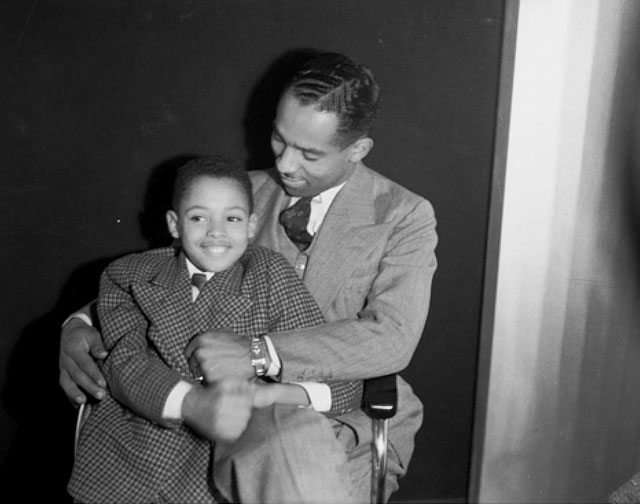 CARNEGIE MUSEUM OF ART/HEINZ FAMILY FUND Charles 'Teenie' Harris (1908-1998) sitting in chair with his son, Charles Harris Jr., c. 1930-1950. Black and white, Agfa Safety Film. Harris's body of work is considered one of the most important records of 20th century African American life. But when he died in 1998, there was something seriously missing from his collection. Though his photos of celebrities, politicians, and those published in the local newspaper were clearly labeled, tens of thousands of his images--everyday scenes at birthday parties, little league games, church groups--had no titles, no identifying information, no dates. Enter Carnegie Museum of Art, which purchased Harris's collection in 2001. Since then, the museum's archivists have scanned and catalogued almost 60,000 photos, releasing many through an online, searchable database. What stands out about the Harris archive is that it keeps changing. Not the images themselves, but the titles. That's because the museum has collaborated with historians, activists, Harris's family members, and--most strikingly--community members from Harris's neighborhood, soliciting any information they can find to help reconstruct the story behind the images. Using digital tools mixed with old-fashioned neighborhood outreach, the museum is updating an historic collection with huge contemporary significance, in the process redefining a cultural institution's relationship to its community.
Take this Harris image (courtesy of Carnegie Museum of Art), highlighted in Professor Nicole Fleetwood's forthcoming book, Troubling Vision (University of Chicago Press), which includes a chapter on Harris. In the book, Fleetwood says the fact that Harris left images like this one unlabeled is part of what distinguishes his work from the canon of documentary photography, lending the archive a particular kind of intimacy, even in its anonymity. At first, Fleetwood says the museum called the above image "Children Showered by Fire Hydrant." Later, they changed the title to "Group of Children Posed under Shower from Fire Hydrant." And then, it became, "Group portrait of children, some in bathing suits, standing on Webster Avenue under spray from fire hose, near Webster Avenue firehouse at Wandless Street, Hill District, August 1947." The archive is full of wordy titles like this one, Fleetwood says. They can be read like small stories--e.g., "Woman, Holding Cigarette, and Robin Bullard on her lap, Seated behind sheet cake inscribed 'Happy Birthday Peg' in kitchen, for birthday party for Margaret Bullard, 2801 Bedford Ave. June 1963." The endless labels are ironic, given that Harris himself was known for his concision, even earning the nickname "One Shot," a reference to his habit of getting his one picture, then moving on. There's a far-flung community that's forming around Harris's work that's not moving on. They're connecting his local time and place to a broader world through the Internet, keeping his work relevant through that process. By adding new information, narrative, context, and memory, they're co-creating his archive, even all these years later, as an emerging, evolving collection with no end in sight. |
| If you live in Dubai, you can get Spiderman to clean your windows Posted: 21 Apr 2010 12:21 PM PDT  There's a cleaning company here in Dubai that will send a man dressed in a Spiderman outfit to clean your windows. According to AMEinfo.com, this service already exists in France and Qatar. There's a cleaning company here in Dubai that will send a man dressed in a Spiderman outfit to clean your windows. According to AMEinfo.com, this service already exists in France and Qatar. |
| Make an iPad stand from its own packaging materials Posted: 21 Apr 2010 12:04 PM PDT |
| Jeff Skoll's poem about the volcano Posted: 21 Apr 2010 11:09 AM PDT This is an ode to the volcano That sent our travel plans into the draino I'm not really one to complaino But this all hurts my little braino Madrid, Casablanca, Amsterdam, Rejkavik on cruiseships The trains will fail All the escape routes that we planned Are blocked by nature or by man We heard the French trains may soon be striking At this rate we'll all be biking With our luck we'll all be struck by lightning! This is all rather frightening So better we all meet at TED That is what I should have said So thank you June and thank you all Damn the volcano, let's have a ball |
| Posted: 21 Apr 2010 12:22 PM PDT Here's another example showing that the more important and powerful you are, the less likely you are to use email, text messaging, instant messaging, or other forms of electronic communication (other than the phone). From oral arguments in the US Supreme Court case City of Ontario v. Quon: UPDATE: BB commentor SeppTB says: "Read in context, the 'email vs pager' comment is a worthy question to ask." The first sign was about midway through the argument, when Chief Justice John G. Roberts, Jr. - who is known to write out his opinions in long hand with pen and paper instead of a computer - asked what the difference was "between email and a pager?"Technical difficulties at the Supreme Court |
| Forget swimming with dolphins, the cool kids are cuddling with elephant seals Posted: 21 Apr 2010 10:32 AM PDT You are about to witness the cutest thing to ever cute. Pretty much. Think of it as a Unicorn Chaser to that Tea Party video. Naturally (because Wednesday is my designated stick-in-the-mud day), I immediately started wondering whether there wasn't something more nefarious going on. Does this elephant seal really just want to snuggle, or is this behavior some sort of thing rabid elephant seals do before they eat you? To find out, I contacted James Wood, Ph.D., director of education at the Aquarium of the Pacific in Long Beach, Cali. He said context is important. One thing to keep in mind, watching this video, is that we don't know anything about the elephant seal's history. Maybe it's learned that humans will feed it tasty things if it repeats behaviors the humans seem to like, and now has a little racket going. That said, Wood also pointed out that many species of animals play, just for the sake of playing. And enjoying physical contact isn't something unique to humans.
Previously: |
| Video: Larry Brilliant on the volcano and climate change Posted: 21 Apr 2010 11:16 AM PDT One of the great things about being in London when the volcano halted our flights home this past weekend was that I was stranded with some of the greatest philanthropists alive today: Larry Brilliant, Paul Farmer, and Peter Gleick, just to name a few. Since we all had nothing else to do but wait until there was some indication that we could get home, the folks at TED (who were also in town) put together an impromptu TEDx Volcano meet-up on Saturday night. Here, Larry Brilliant — the former head of Google.org who famously helped end the smallpox epidemic in 1980 — gives me a post-TEDx recap of what he thinks of the volcano and climate change. "Climate change is the great exacerbator," he says. "What we need to learn from this volcano is that the world gets pretty messy very quickly when our science is uncertain. We need to invest to get the best science in the world, to support the best scientists, to create careers in science in the 21st century." |
| Introducing Tom the Dancing Bug @ Boing Boing Posted: 21 Apr 2010 09:57 AM PDT 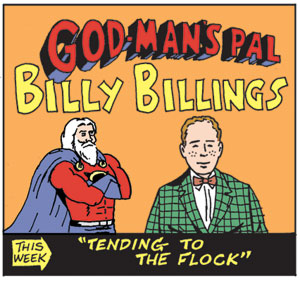 Ruben Bolling is the author of the weekly comic strip "Tom the Dancing Bug," and we're delighted to have him here with us at Boing Boing. "Tom" won the 2009 Association of Alternative Newsweeklies Award for Best Cartoon, the third time in a row, and is the only comic to have won the award more than once and to have been a finalist every year since the award began in 2001. The 2003 AAN judges said of the comic strip: "Consistently funny, pointed without being dogmatic, and takes on subjects that no one else does ... an oasis of keen intelligence." Ruben Bolling has authored three "Tom the Dancing Bug compilation books: Thrilling Tom the Dancing Bug Stories (Andrews McMeel, 2004); All I Ever Needed to Know I Learned From My Golf-Playing Cats (NBM Publishing, 1997); and Tom the Dancing Bug (HarperCollins, 1992). Bolling's also had original comics published in The New Yorker, Nickelodeon, Mad Magazine, ESPN The Magazine and Harper's. One of "Tom the Dancing Bug's" popular recurring characters, "Harvey Richards, Lawyer for Children" is set to become the star of a live action motion picture by New Line Cinema. First comic after the jump. Enjoy! Ruben Bolling is the author of the weekly comic strip "Tom the Dancing Bug," and we're delighted to have him here with us at Boing Boing. "Tom" won the 2009 Association of Alternative Newsweeklies Award for Best Cartoon, the third time in a row, and is the only comic to have won the award more than once and to have been a finalist every year since the award began in 2001. The 2003 AAN judges said of the comic strip: "Consistently funny, pointed without being dogmatic, and takes on subjects that no one else does ... an oasis of keen intelligence." Ruben Bolling has authored three "Tom the Dancing Bug compilation books: Thrilling Tom the Dancing Bug Stories (Andrews McMeel, 2004); All I Ever Needed to Know I Learned From My Golf-Playing Cats (NBM Publishing, 1997); and Tom the Dancing Bug (HarperCollins, 1992). Bolling's also had original comics published in The New Yorker, Nickelodeon, Mad Magazine, ESPN The Magazine and Harper's. One of "Tom the Dancing Bug's" popular recurring characters, "Harvey Richards, Lawyer for Children" is set to become the star of a live action motion picture by New Line Cinema. First comic after the jump. Enjoy!
|
| Lawsuit-plagued McAfee founder hunts for libido-boosting herbs in Belize Posted: 21 Apr 2010 10:51 AM PDT Jeff Wise of Fast Company went to Belize to profile 64-year-old John McAfee, the eccentric bad-boy founder of the McAffee antivirus company. With at least five civil lawsuits hounding him, McAfee claims he's lost 96% of his fortune, and is now interested in finding plant-based medicines for a variety of ailments, including libido-boosters for women. Wise isn't so sure McAfee is as broke as he claims, however. Earlier today, John McAfee added a comment to the article at the Fast Company website disputing a couple of claims made by Wise in the article. Plagued by Lawsuits, McAfee Founder Hunts for Cures in Belize (Via Joel Johnson) |
| ACTA draft text released: nearly identical to leaks Posted: 21 Apr 2010 08:50 AM PDT Michael Geist sez, As the ACTA negotiating countries promised, a draft consolidated text was released earlier today. Unlike the earlier leaked version which provided specific attribution to country positions, this official version has removed references to those positions, so the text does not state who supports which version of the text.ACTA Draft Text Released: (Nearly) Same As It Ever Was (Thanks, Michael!) |
| Words of wisdom from Tax Day Tea Party protestors Posted: 21 Apr 2010 08:35 AM PDT The folks who attended Tax Day Tea Party 2010 put this know-it-all interviewer in his place. Bonus ukulele girl segment: The lovely Victoria Jackson plays a ditty for itty bitty kiddies about the "communist in the White House." (Via Dangerous Minds) |
| Bennett needs to get out of volcano land to meet his newborn baby Posted: 21 Apr 2010 08:17 AM PDT Meet Bennett Grassano. His wife gave birth to a beautiful baby girl in San Francisco last Thursday, but he hasn't been able to get home to see his daughter because of the ash cloud. I took this short video clip of Bennett at a tapas bar in London while we — along with many other folks from last week's Skoll social entrepreneurship conference — were stranded together in the UK. Some of us had started to enjoy the idea of being "volcano refugees," but Bennett (who, by the way, is the development director at Kiva) was understandably anxious to get home to his wife and daughter. As I listened to him talk about his baby girl and admire a photo of her on his iPhone, I realized that this guy deserved to get home more than any of the rest of us. Bennett is currently in Madrid after a ferry ride from Portsmouth to St. Malo and a drive through Bordeaux and Biarritz, hoping to catch a flight back to San Francisco via Mexico City tomorrow. Things are looking upwards, so let's all wish him luck and hope that he will be holding little Opal in his arms soon. |
| Posted: 21 Apr 2010 07:22 AM PDT  Progress City, USA has a long and comprehensive look at the planning and early prototypes for EPCOT Center (now Epcot) at Walt Disney World. It's a fascinating, year-by-year look at the progress of corporate futurism and the way that designers, corporate sponsors, and bean-counters attempt to converge on a vision for the future: Some of the beginning concepts for this "information marketplace" include:EPCOT: Origins - Master Plan 5, 1977 (via The Disney Blog) Previously:
|
| When Copyright Goes Bad - documentary Posted: 21 Apr 2010 07:11 AM PDT Ben Cato Clough and Luke Upchurch's "When Copyright Goes Bad" (from Consumers International) is a great, 15-minute mini-documentary on what copyright can do, what it is doing, and what it needs to stop doing. Appearances by Fred Von Lohmann - Electronic Frontier Foundation; Michael Geist - University of Ottawa Law School; Jim Killock - Open Rights Group; and Hank Shocklee - Co-founder of Public Enemy. When Copyright Goes Bad (English) (Thanks, Jim!) Previously:
|
| Die Antwoord's US debut at Coachella: interview, photo gallery (Boing Boing Video) Posted: 21 Apr 2010 08:15 AM PDT (PHOTO in video still: Clayton Cubitt) WATCH VIDEO: YouTube, or download MP4. Ninja and Yo-Landi of Die Antwoord sat down with me for an interview just after the South African "rap-rave" band's first-ever US performance at the Coachella music festival. The duo spoke about their explosive, internet-fueled burst to fame, and about the origins of their "car crash music" (it's disturbing, but you can't look away) by way of District 9 and an anarchic internet and music subculture in post-Apartheid South Africa. I'm told this is the only interview Die Antwoord granted during their US visit. Our conversation originally streamed live as part of the Los Angeles Times / Brand X magazine Coachella Oasis Webcast. After the jump, a gallery of photos from their Coachella performance, shot by Dave Bullock (eecue).
Previously:
Photos of Die Antwoord live at Coachella, below: Dave Bullock (eecue)
More Boing Boing video here. Links to fan-shot videos of Die Antwoord's performance at Coachella: user allisongeddie's clips parts 1, part 2, and part 3; and here are many more uploads by other fans in the audience. ♥ THANKS: Eric Mittleman; David Burns, Scott Dallavo, and Richard Metzger of the Los Angeles Times and Brand X Magazine; Mazy Kazerooni and the UStream.tv team; Philip Nelson, Rex Olson and colleagues at Newtek, makers of the Tricaster live video production system on which this was recorded and produced; Diane Coetzer and Jay Savage; Syd Cohen and the office of Joel Zimmerman at WME; and Allison Geddie, whose video of Die Antwoord performing live at Coachella is briefly excerpted in this episode. |
| F*#$^@*in' comets, how do they work? Posted: 21 Apr 2010 07:40 AM PDT  Phil Plait of Bad Astronomy can help you understand this miracle of the cosmos. His post on 10 Things You Didn't Know About Comets does include some things I already knew—the whole "comets are basically dirty snowballs" bit—but there's plenty of wonderful new-to-me-anyway knowledge to make up for it. For instance, that circled dot in the image up there? That's Halley's Comet, as photographed in 1982, while it was out on the far side of Saturn. Notice how there's just a dot, and no big, long tail? That's not a misleading trick of space photography. When they're far enough away from the sun, comets lose their snowball slushiness and freeze down into tiny, solid balls.
Bad Astronomy: 10 Things You Don't Know About Comets For more about this Halley pic, visit the Smithsonian Air and Space Museum. |
| You are subscribed to email updates from Boing Boing To stop receiving these emails, you may unsubscribe now. | Email delivery powered by Google |
| Google Inc., 20 West Kinzie, Chicago IL USA 60610 | |



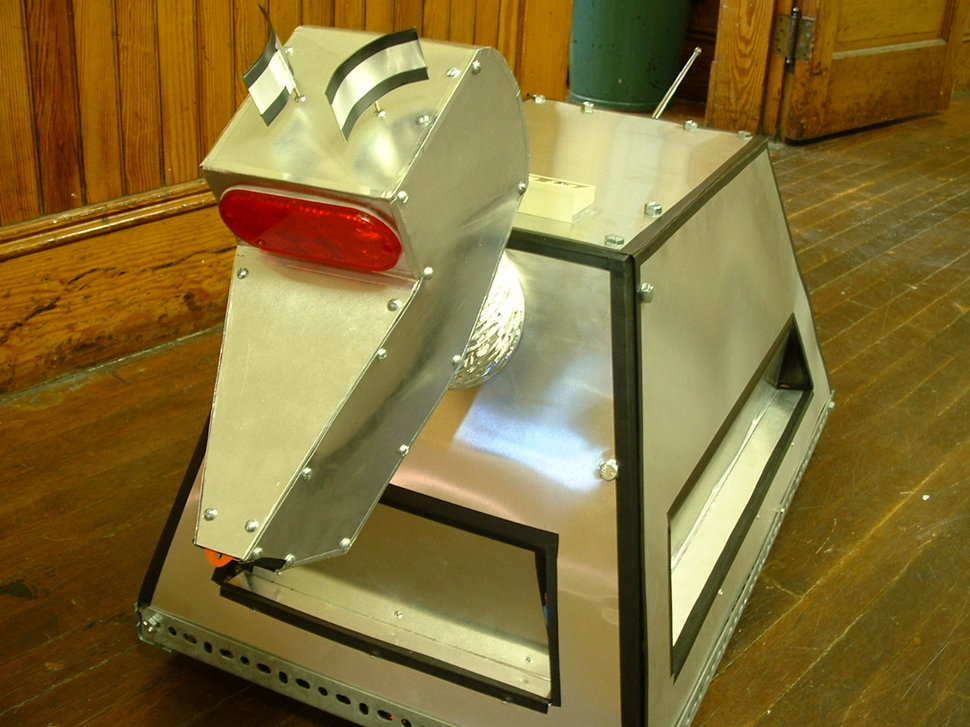
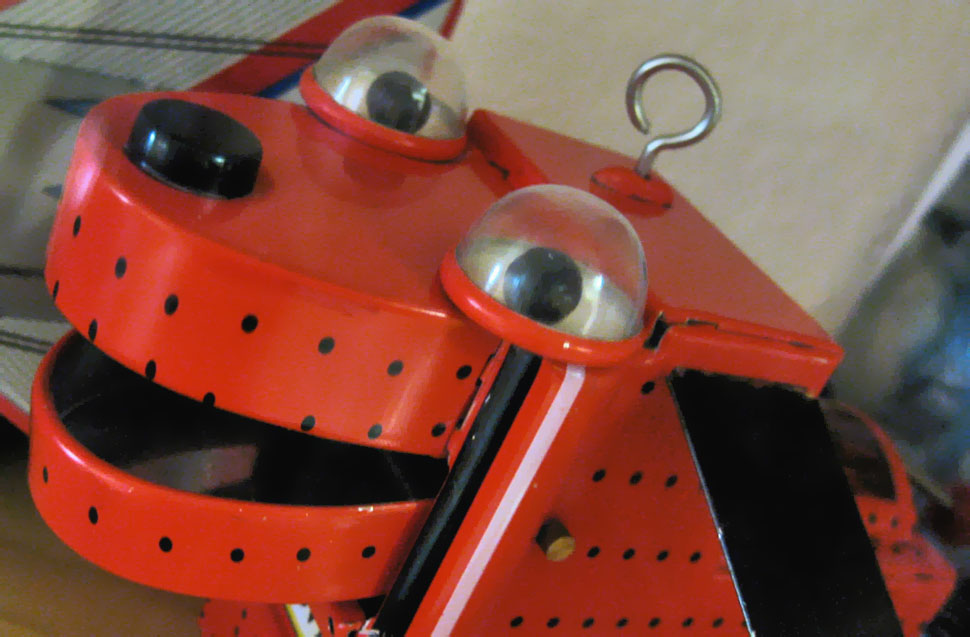
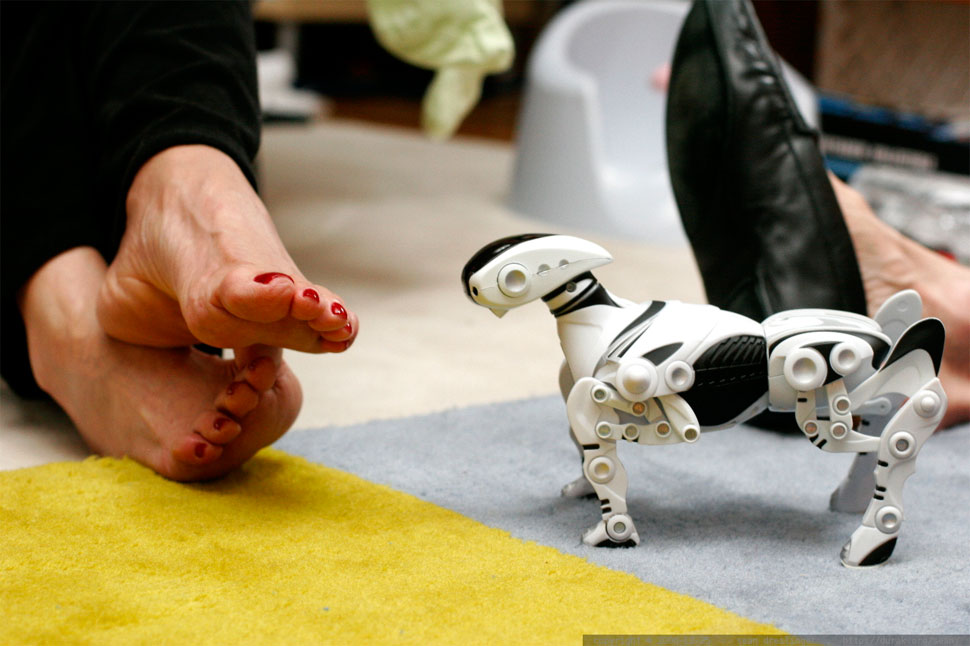

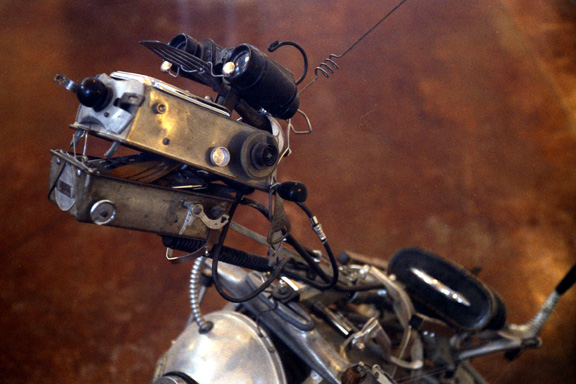

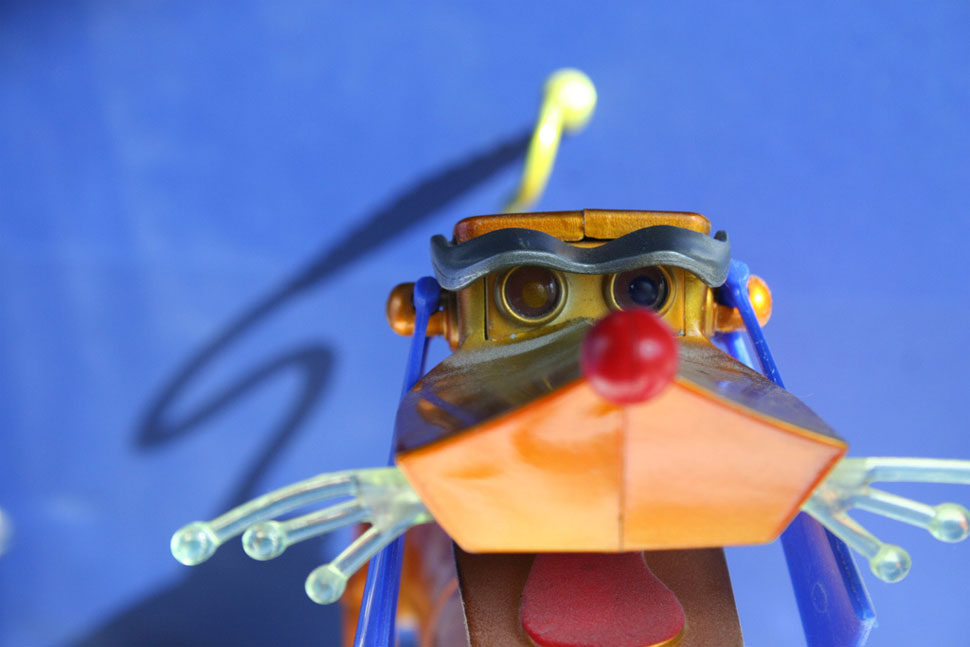





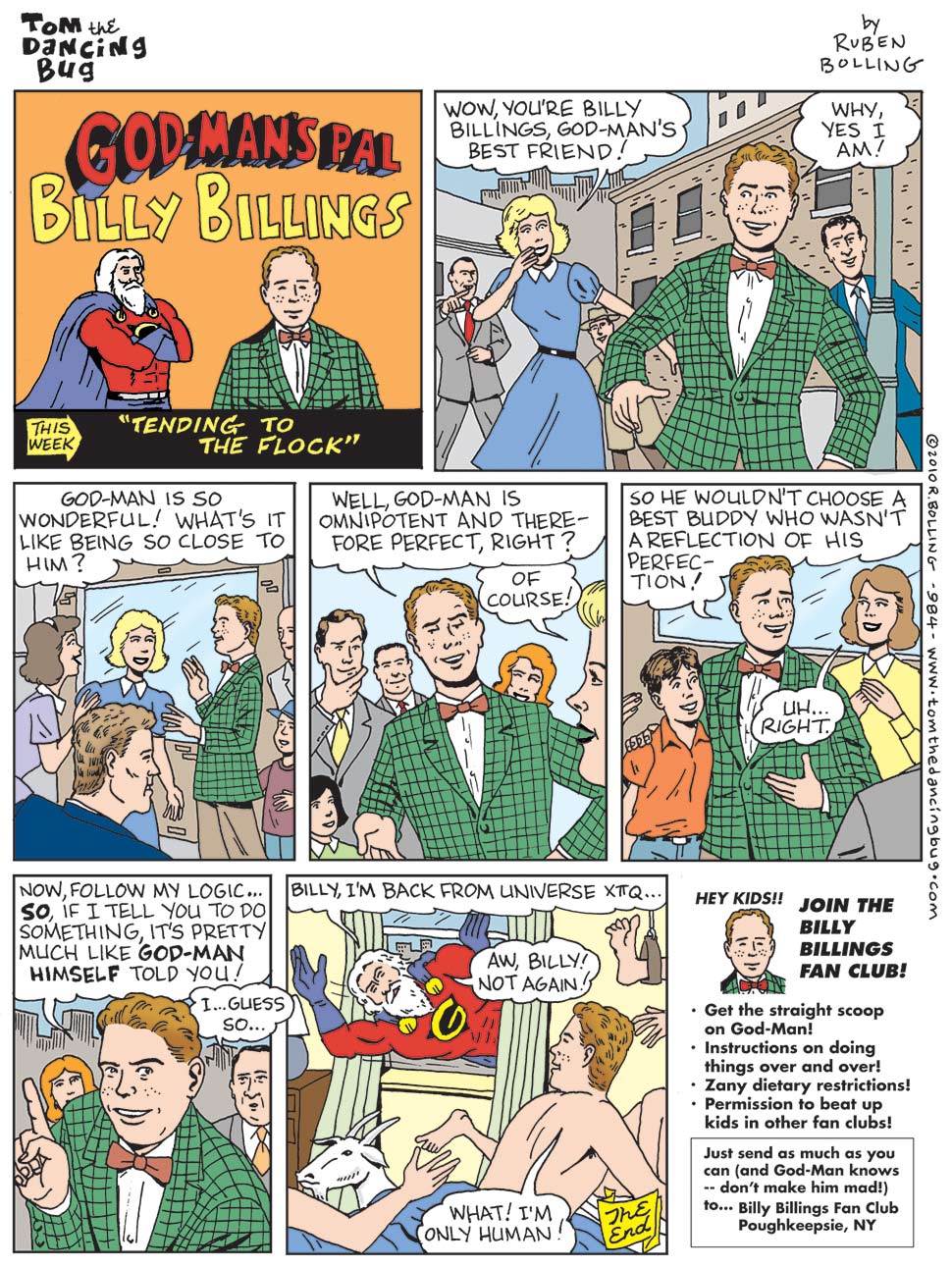










No comments:
Post a Comment